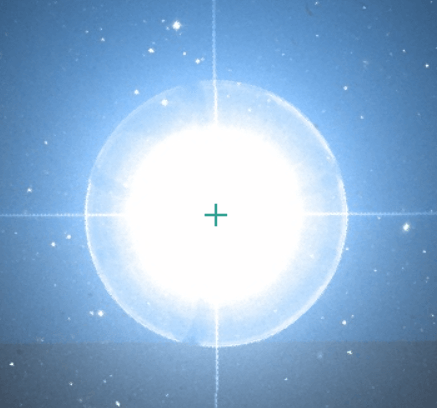Star of the Month
Alpha Leonis
AKA: Regulus.
Position: 10 hrs 08 min 22.3 sec 11 degrees 58 min 01 sec
Due south at 22.34 (GMT) on 15 March
Regulus or Alpha Leonis
Image: Simbad (http://simbad.u-strasbg.fr/simbad/)
Regulus (the Prince in Latin) is a bright star (magnitude 1.4) which is easily found as it is the star at the base of the Sickle asterism at the front end of Leo. It is 79 million light years away from us. But why should we be interested in it? Because it is spinning very rapidly, so rapidly that is only takes 15.9 hours to spin on its axis (compared with our Sun’s positively lethargic 27 days) and the rotation speed at the equator is 320 km/sec (716,000 mph). if it were only 3.5% faster, the star would break up. This high rotation rate means that it has a highly oblate shape – it is egg-shaped. As a result, the photosphere at the poles is both hotter and brighter than it is at the equator. The star Alpha Eridani (Achernar) is very similar in terms of its rotation, but it is not visible from Havering. But Regulus is also a mysterious star. As a large B8 class star with a mass of 3.8 solar masses (it is a white subgiant) its life is inevitably going to be short compared with our Sun, but it also appears to be young, perhaps 50-100 million years old. Yet it has a white dwarf companion which implies it is at least one billion years old. A possible solution is that material has been transferred to an initially smaller Regulus. Regulus is also a double star, but not a very interesting one. Its visible companion is magnitude 8.2 and is a very wide 179 arcseconds distant (it may be the star in the outer halo in the above picture at roughly 11 o’clock). As a very wide double, it was listed in Wilhelm Struve’s second catalogue of wide doubles and is now known as STFB 6. Despite this wide visual separation, it is a binary star with a distance of 5,000 AU between them. The companion is actually two stars, a K2 star and a red dwarf.
